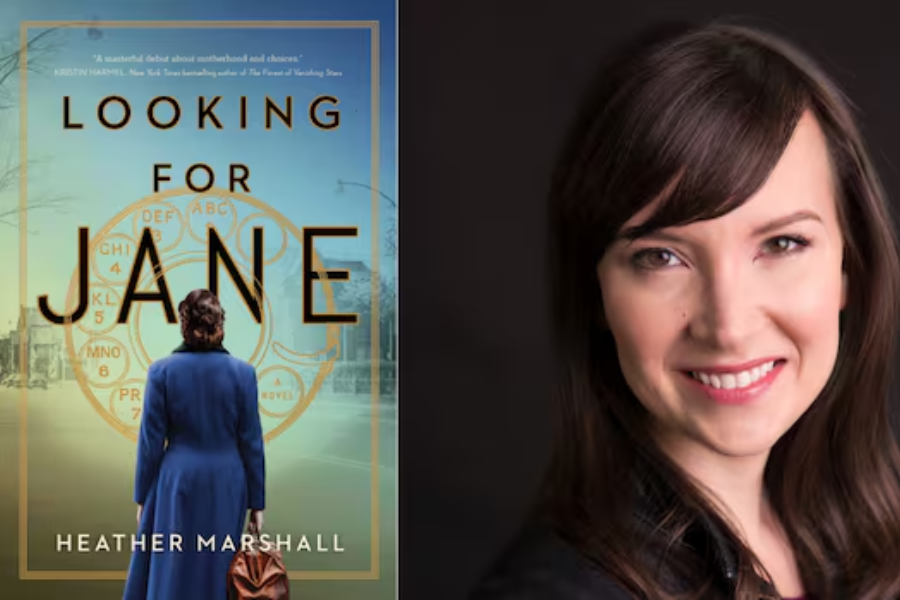Heather Marshall’s debut novel, Looking for Jane, captures the struggles and triumphs of young Canadian women during the postwar era. Through a fictional lens, Marshall brings to life the harrowing experiences of women navigating forced adoptions, underground abortion networks, and the complexities of motherhood. This profound story sheds light on a dark chapter in Canadian history while celebrating women’s resilience.
Unpacking the Themes in Looking for Jane

Looking for Jane tackles monumental topics such as reproductive rights and the emotional journey of motherhood. The narrative revolves around three intertwined stories: Evelyn, a 1961 resident of a maternity home who later becomes a doctor aiding the Jane network; Nancy, a teenager in 1981 who seeks an abortion and joins the network; and Angela, who, in 2017, uncovers a misdirected letter that changes her life.
Marshall explains, “While abortion is central to the plot, the novel is ultimately about motherhood. It explores the spectrum of choices surrounding motherhood—wanting to become a mother, choosing not to, or navigating the grey areas in between.”
The Origin of Looking for Jane
When asked about the genesis of Looking for Jane, Marshall shared that the story was born from two distinct ideas—one about Canada’s maternity homes and the other about abortion rights. “I realized these were two sides of the same coin,” she explains. “They both highlight women’s struggle for bodily autonomy. Once the idea came together, it felt urgent to write this story.”
Through this compelling narrative, Marshall hopes to spark meaningful conversations about reproductive rights and ensure the struggles of past generations are never forgotten.
What’s Behind the Title Looking for Jane?
The title references the underground abortion networks that existed before the procedure was legalized. “During my research, I discovered a group in Chicago nicknamed ‘Jane,’ which inspired the network in my novel,” Marshall shares. In the book, women in need are advised to call doctors’ offices and ask for Jane. This simple yet powerful act of seeking Jane becomes a symbol of solidarity and support for women facing life-altering decisions.
Shedding Light on Canada’s Maternity Homes
One of the most heart-wrenching aspects of Looking for Jane is its depiction of maternity homes, where unwed mothers were often isolated, forced into labor, and coerced into giving up their babies for adoption. Marshall’s portrayal is both empathetic and unflinching.
“The treatment these women endured was appalling,” she says. “Many were subjected to cruel and punitive environments. From 1945 to 1971, nearly 600,000 babies were labeled ‘illegitimate,’ and over 300,000 women were forced to surrender their children. These stories need to be told.”
The Role of Government in Maternity Homes
While social programming falls under provincial jurisdiction, the federal government’s involvement through funding played a significant role. “In the 1960s, the Canada Assistance Plan supported provincial programs, including maternity homes,” Marshall explains. “Outsourcing these programs to religious organizations created a troubling mix of oversight that often failed these women.”
Unearthing Hidden Histories
Marshall admits that information about Canada’s maternity homes wasn’t readily available when she began her research. “I learned about this issue through a newspaper article featuring Origins Canada, an organization advocating for women affected by forced adoptions. The firsthand accounts I found were heartbreaking and became the foundation for my characters.”
Despite the Senate’s 2018 recommendation for a formal apology, Marshall notes, “We’re still waiting for acknowledgment. Looking for Jane aims to amplify these women’s voices.”
Recreating Historical Moments
Marshall’s novel vividly portrays pivotal moments in the fight for women’s rights, such as the 1970 Abortion Caravan in Ottawa. She also imagines a meeting between Dr. Henry Morgentaler, a key figure in Canada’s abortion movement, and one of her protagonists. To bring these events to life, she drew inspiration from Judy Rebick’s book, Ten Thousand Roses, which compiles firsthand accounts from activists.
Writing While Embracing Motherhood
Marshall’s own pregnancy shaped her connection to the story. “I felt deeply connected to Angela’s emotional journey and Paula’s activism,” she shares. “Editing Evelyn’s farewell to her baby while holding my newborn was incredibly emotional. Motherhood brought a new layer of empathy to my writing.”
A Nonjudgmental Exploration of Women’s Choices

One of the most striking aspects of Looking for Jane is its refusal to pass judgment on women’s decisions. Marshall explains, “Every woman’s journey is unique. While I’m grateful to live in a country where reproductive choice is a legal right, I wanted to reflect the complexity of these decisions with compassion and understanding.”
Lessons for Future Generations
Marshall emphasizes the importance of open conversations between mothers and children. “Sharing family history and values is vital,” she says. “You never know when time might run out. Looking for Jane highlights the importance of understanding where we come from and the choices that shape our lives.”
The Impact of Looking for Jane
Heather Marshall’s debut novel is more than just a story—it’s a call to remember the past and fight for the future. By intertwining historical truths with compelling fiction, Looking for Jane underscores the importance of choice, compassion, and solidarity. As readers turn the final page, they are reminded that these stories matter—not just for the women who lived them but for the generations that follow.
Explore trending topics and breaking news across entertainment at EasyFuzz.com.







